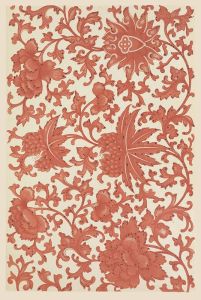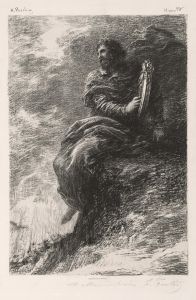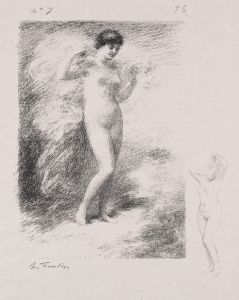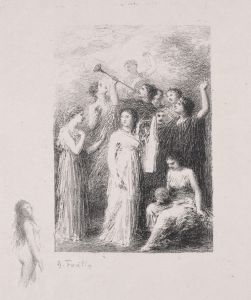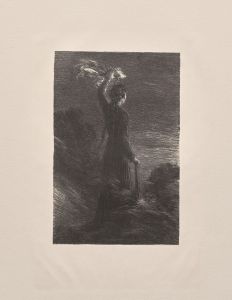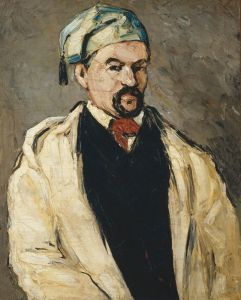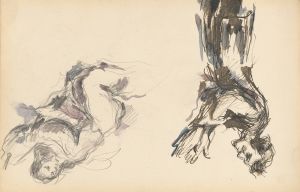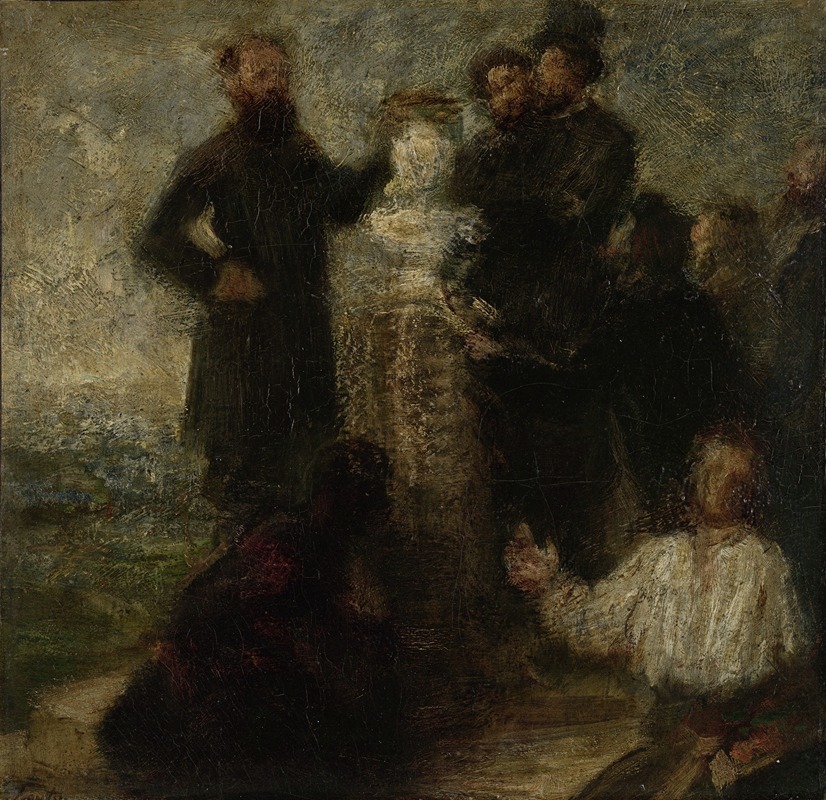
Esquisse pour l’Hommage à Delacroix
A hand-painted replica of Henri Fantin-Latour’s masterpiece Esquisse pour l’Hommage à Delacroix, meticulously crafted by professional artists to capture the true essence of the original. Each piece is created with museum-quality canvas and rare mineral pigments, carefully painted by experienced artists with delicate brushstrokes and rich, layered colors to perfectly recreate the texture of the original artwork. Unlike machine-printed reproductions, this hand-painted version brings the painting to life, infused with the artist’s emotions and skill in every stroke. Whether for personal collection or home decoration, it instantly elevates the artistic atmosphere of any space.
Henri Fantin-Latour's "Esquisse pour l’Hommage à Delacroix" is a preparatory sketch for a larger, more famous painting titled "Hommage à Delacroix," completed in 1864. This work is a significant piece in the oeuvre of Fantin-Latour, a French painter known for his still lifes and group portraits. The sketch and the final painting both serve as a tribute to Eugène Delacroix, a leading figure of the Romantic movement in French art, who passed away in 1863.
Fantin-Latour's homage is notable for its assembly of contemporary artists and writers who admired Delacroix and were influenced by his work. The sketch, like the final painting, features a group of these prominent figures gathered around a portrait of Delacroix. This gathering includes notable artists such as Édouard Manet, James McNeill Whistler, and Charles Baudelaire, among others. Each figure in the composition is carefully chosen to represent the impact Delacroix had on the art world and to underscore the sense of loss felt by his contemporaries.
The creation of "Esquisse pour l’Hommage à Delacroix" reflects Fantin-Latour's deep respect for Delacroix and his desire to commemorate the Romantic master's legacy. Delacroix was celebrated for his expressive use of color and dynamic compositions, qualities that influenced many artists of the time, including Fantin-Latour. By assembling a group of Delacroix's admirers, Fantin-Latour not only pays tribute to the artist but also highlights the sense of community and shared inspiration among the artists of his era.
Fantin-Latour's approach to this homage is characterized by his meticulous attention to detail and his ability to capture the likenesses and personalities of the individuals portrayed. The sketch, while less detailed than the final painting, provides insight into Fantin-Latour's process and his method of composition. It serves as a preliminary exploration of the arrangement and interaction of the figures, as well as the overall mood of the piece.
The final painting, "Hommage à Delacroix," was exhibited at the Salon of 1864, where it garnered attention for its unique subject matter and the skillful execution of its group portrait. The work stands as a testament to the enduring influence of Delacroix and the respect he commanded among his peers. It also marks a significant moment in Fantin-Latour's career, showcasing his ability to blend portraiture with a narrative of homage and remembrance.
Fantin-Latour's "Esquisse pour l’Hommage à Delacroix" and the subsequent painting are important cultural artifacts that reflect the artistic milieu of mid-19th century France. They capture a moment of transition in the art world, as the Romantic ideals championed by Delacroix began to give way to new movements and ideas. Through this work, Fantin-Latour not only honors a revered artist but also encapsulates the spirit of an era and the bonds formed through shared artistic pursuits.






